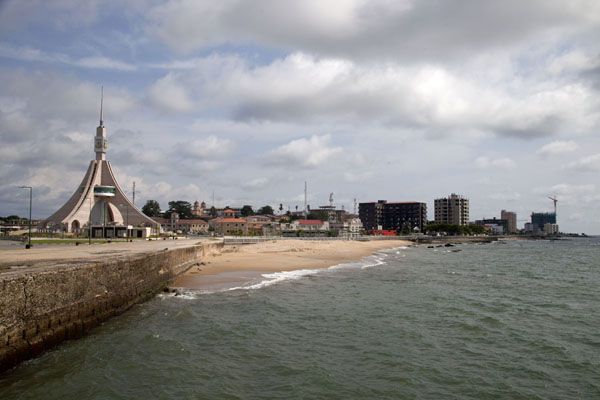Ecuatorial Guinea attractions for all travelers? Slowly transforming from a patchwork of foundation ditches and gritty construction sites and beginning to shoulder its way above the verdant swathes of jungle that dominate the hinterlands of Wele-Nzas Province in the very heart of Equatorial Guinea, the city of Djibloho remains just an embryo of what’s planned. Also called Oyala, this perfectly-organised city of crisscrossing grids and all-new conference centers is intended as the future capital of the nation. Once complete, it will aspire to champion a symbiotic relationship between modern living and the country’s natural environment and heritage.
Last but not least comes little Utonde on the Atlantic coast. With easy access to the runways of Bata Airport and long stretches of largely undeveloped white sand along its edge, it’s hardly a surprise that it’s here where some of Equatorial Guinea’s most ambitious tourism development projects are taking hold. Mega resorts are planned, with infinity pools and private beachfronts, while there’s also connections to the sprawling 330 square kilometers of land that is the Rio Campo Reserve, spread out over Fang tribal hamlets and wetlands near the Cameroonian border to the north.
A curious fusion of colonial traditions meets between the age-stained, salt-washed architectural pieces that pepper Malabo’s heart. They stand as testimony to the city’s – the soon-to-be-replaced capital of Equatorial Guinea – long history, and its deep-rooted European heritage. Visitors can come and stroll the streets to see the gorgeous neo-Gothic spires of the Cathedral of Santa Isabel, and enchanting little Spanish-esque casas along the neighborhood roads. There’s also a university and a Cultural Center, ringed by a smattering of clubs and fried-plantain curry houses, all cascading down towards the clifftops above the Atlantic. Read extra info on this website.
For our spanish guests :
Brillantes arenas bordean los manglares esmeralda; no pisoteado subdesarrollado. Ciudades como Bata pululan con flotas pesqueras y el hedor de la nueva riqueza petrolera. Malabo, la capital, languidece en la isla de Bioko, sus habitantes locales todavía asombrados por las grandes calderas y las playas salpicadas de tortugas que abundan cerca. No es ajeno a los problemas (EQ ha tenido golpes de estado y luchas económicas en abundancia), ¡esta tierra en el corazón de África Occidental promete intrépidas aventuras y vida salvaje para romper la lista de deseos en dos!
Transformando lentamente a partir de un mosaico de zanjas de cimientos y sitios de construcción arenosos y comenzando a abrirse camino por encima de las verdes franjas de selva que dominan el interior de la provincia de Wele-Nzas, en el corazón de Guinea Ecuatorial, la ciudad de Djibloho sigue siendo solo un embrión de Lo que está planeado. También llamada Oyala, esta ciudad perfectamente organizada de redes entrecruzadas y centros de conferencias completamente nuevos está pensada como la futura capital de la nación. Una vez completado, aspirará a defender una relación simbiótica entre la vida moderna y el entorno natural y el patrimonio del país.
Por último, pero no menos importante, viene el pequeño Utonde en la costa atlántica. Con fácil acceso a las pistas de aterrizaje del aeropuerto de Bata y largos tramos de arena blanca en gran parte sin desarrollar a lo largo de su borde, no sorprende que sea aquí donde se están desarrollando algunos de los proyectos de desarrollo turístico más ambiciosos de Guinea Ecuatorial. Se planean mega resorts, con piscinas infinitas y frentes de playa privados, mientras que también hay conexiones con los extensos 330 kilómetros cuadrados de tierra que es la Reserva de Río Campo, que se extiende sobre las aldeas tribales Fang y los humedales cerca de la frontera con Camerún al norte. Leer extra detalles en Billetes de avión baratos Guinea Ecuatorial.
